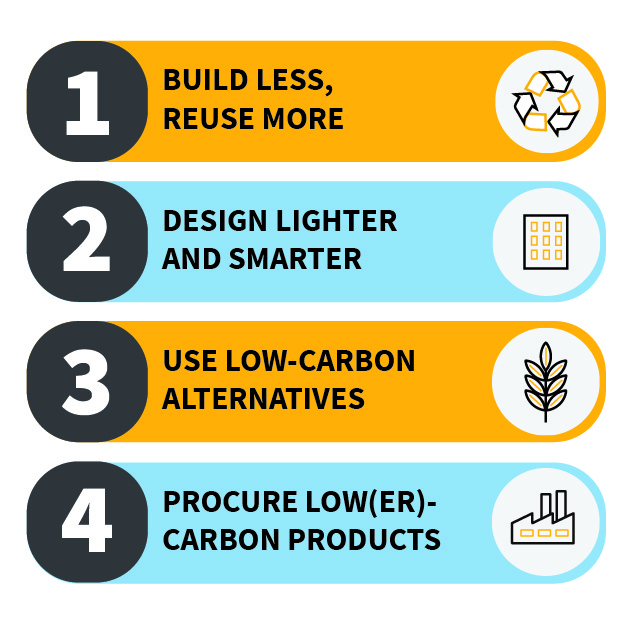Design and construction teams have a growing number of strategies and tools to choose from to reduce embodied carbon on their projects. This template provides a checklist for project teams to use and adapt to make it easier for teams to systematically discuss if they have considered strategies that may be relevant for their projects.
Goals of the template checklist
1. Raise awareness of the large range of strategies available to reduce embodied carbon
2. Increase likelihood that carbon discussions happen in early design stages to unlock greater opportunities for design changes that reduce embodied carbon.
By identifying strategies the team intends to pursue at the beginning (Schematic Design) and end (As-Built) of a project, the checklist also provides a tool for identifying challenges, why goals had to change throughout the project, and opportunities for improvement on future projects.
To read more about measuring and reducing embodied carbon on projects, also check out the AIA-CLF Embodied Carbon Toolkit for Architects.
Authors
The research team working under direction of the Carbon Leadership Forum at the University of Washington College of Built Environments:
- Meghan Lewis, Senior Researcher, Carbon Leadership Forum
- Brook Waldman, Researcher, Carbon Leadership Forum
- Monica Huang, Researcher, Carbon Leadership Forum
- Kate Simonen, Executive Director, Carbon Leadership Forum
Acknowledgments
We would like to thank Eden Brukman at the San Francisco Department of the Environment for inspiring this project and to her colleagues at the City of San Francisco for providing review. We would also like to thank members of the Carbon Leadership Forum network who provided initial feedback.
Copyright
Template: Project Checklist for Reducing Embodied Carbon is licensed under a Creative Commons Attribution 4.0 International Licence.
